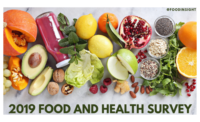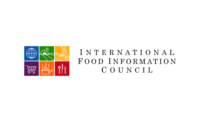2020 Food trends: Intuitive eating and the 'un-diet,' sustainability, new food tech

As a new year and new decade offer opportunities to take stock of where we’ve come and to anticipate the changes ahead, the International Food Information Council (IFIC) Foundation is forecasting five broad trends for food and nutrition in 2020.
“Each year, our team of registered dietitians, nutrition experts and consumer researchers takes a look at what we can expect in the coming year,” said Joseph Clayton, president and CEO. “In 2020, we predict that topics surrounding sustainability, alternative foods and healthy diets will move in some unexpected directions.
Sustainability: From buzzword to specifics
Interest in sustainability has grown for the past few years, and while in 2020 the topic will mature and evolve, confusion still surrounds the exact definition of sustainability.
For several years, the IFIC Foundation’s annual Food and Health Survey asked whether sustainability was a factor in consumers’ food and beverage purchasing decisions. Between 2012 and 2018, that number ranged between 35 percent and 41 percent of consumers.
However, when the 2019 Survey asked whether “environmental sustainability” was a factor in purchase choices, that number dropped to 27 percent, indicating that consumers’ notions of sustainability extend beyond just the environment. When it comes to environmental sustainability, consumers are eager to know and do more. According to the 2019 Food and Health Survey, 63 percent said it is hard to know whether the food choices they make are environmentally sustainable. Among that group, nearly two-thirds (63 percent) say environmental sustainability would have a greater influence on their choices if it were easier to know.
Consumers also consider factors such as the labeling of various product ingredients and attributes, along with production methods and food packaging, to be under the sustainability umbrella. We can also expect concepts like soil health and regenerative agriculture—“giving back to the land” rather than just conserving resources—to gain traction in 2020.
A new climate for what we eat
On an almost daily basis, we get new indications that our climate is becoming more precarious, from unprecedented wildfires around the world to the increasing incidence and severity of hurricanes, to the accelerating rate of polar ice loss.
According to the Intergovernmental Panel on Climate Change, agriculture, forestry and other land uses are responsible for nearly one-quarter of net, human-caused global greenhouse gas emissions. A 2016 systematic review of available research further suggests that “a dietary pattern higher in plant-based foods (e.g., vegetables, fruits, legumes, seeds, nuts, whole grains) and lower in animal-based foods (especially red meat), as well as lower in total energy, is both healthier and associated with a lesser impact on the environment.
In 2020, consumers will become more concerned about the role the food system plays in climate change, such as the effects of agricultural production, food waste and transportation of goods.
Environmental concerns will continue to drive greater adoption of plant-based diets. However, consumers’ conceptions of plant-based diets vary. About one-third (32 percent) of consumers say a plant-based diet is a vegan diet, while another 30 percent define it as a diet that emphasizes minimally processed foods that come from plants, with limited consumption of animal meat, eggs and dairy.
Another one in five (20 percent) believe it to be a vegetarian diet that avoids animal meat, while 8 percent say it is a diet in which you try to get as many fruits and vegetables as possible, with no limit on consuming animal meat, eggs and dairy.
Intuitive eating and the "un-diet"
In 2020, we can expect consumers to consider new ideas about how and why we eat. Fad diets and get-thin-quick regimens will continue to lose popularity, supplanted by more holistic and sustainable concepts like intuitive eating, which rejects many of the tenets of fad diets like “good foods” and “bad foods.” The “un-diet” will focus less on food restrictions and more on natural cues our body gives us, like when we are full, and on healthier relationships with food overall.
Millennial consumers increasingly consider health as more than just a number on a scale. The 2019 Food and Health Survey found that 49 percent of those age 18-34 are familiar with mindful and intuitive eating, while only 27 percent of consumers over 50 have heard of the terms.
Let’s face it: Balance and moderation aren’t fads, and they aren’t going away any time soon.
New spins on old standbys
A cold glass of milk or a juicy burger have long been staples of American diets, but 2020 will see a proliferation of new spins on those old classics.
If you thought you had seen the last of milk alternatives like soy, almond, coconut and rice, another grain will get in on the act: oat milk. Food producers and retailers are incorporating it into more and more products, offering more choices for those who can’t or don’t want to consume milk and dairy products.
Consumers’ comfort level with food technologies that add pleasure and benefits to our diets will increase. Food companies will also make more progress toward the holy grail: plant-based products that more closely mimic the taste and other positive attributes of meat.
Cell-based meat will become more and more viable, and closer to within reach of average consumers.
The ingredients for trust
Despite (or perhaps because of) growing acceptance of innovative and diverse food alternatives, familiarity will hold a greater pull for many Americans. Consumers in 2020, especially older ones, will base many of their purchase decisions on the brands and ingredients they know.
According to the 2019 Food and Health Survey, 70 percent of Americans reported that trust in a brand had at least some impact on what foods and beverages they buy. But those factors are much more important to older consumers: Trust in a brand impacted the purchase decisions of 85 percent of consumers age 65 and above, but only 66 percent of younger consumers.
At the same time, nearly two-thirds (63 percent) of consumers said recognizing the ingredients that go into a product had at least some impact on their purchasing decisions. Food labels will be more important than ever, as consumers increasingly seek information about ingredients they seek or try to avoid.
Looking for a reprint of this article?
From high-res PDFs to custom plaques, order your copy today!









